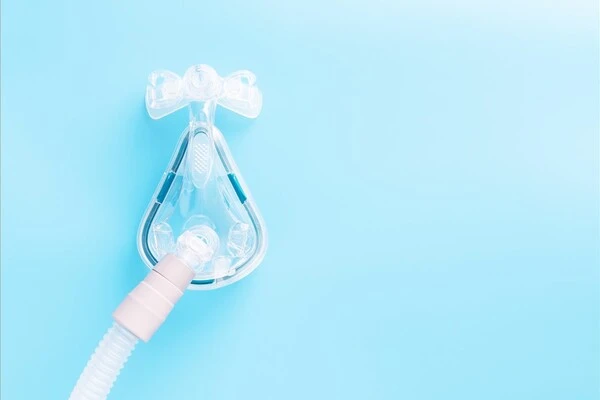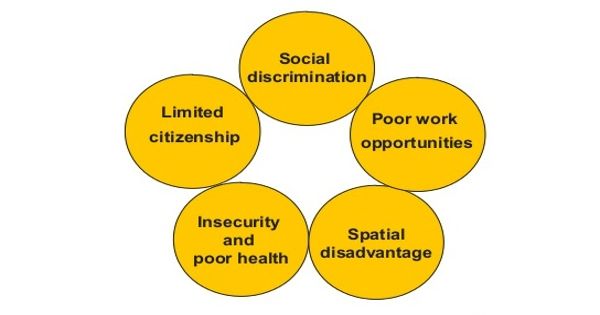According to Johns Hopkins Medicine researchers, a new study with obese mice adds to evidence that specialized channel proteins are potential therapeutic targets for sleep apnea and other abnormally slow breathing disorders in obese people.
TRPM7, a cation channel, is found in carotid bodies, tiny sensory organs in the neck that detect changes in oxygen and carbon dioxide levels, as well as certain hormones such as leptin, in the bloodstream. TRPM7 proteins aid in the transport and regulation of positively charged molecules into and out of the cells of the carotid bodies.
The new study, conducted in the Johns Hopkins Medicine Polotsky Research Lab and led by postdoctoral fellow Lenise Kim, Ph.D., builds on previous findings from the lab that show TRPM7 contributes to the development of high blood pressure in mice.
The most recent experiments, described in a report first published in The Journal of Physiology, revealed that TRPM7 plays a role in suppressing breathing in obese mice with symptoms of sleep-disordered breathing conditions.
We’ve shown that genetically knocking out TRPM7 in the carotid bodies reduces suppressed respiration in sleep-disordered breathing. While more research is needed, carotid body TRPM7 is a promising therapeutic target not only for obesity-related hypertension but also for obesity-related abnormal breathing during sleep.
Vsevolod (Seva) Polotsky
Sleep-disordered breathing is characterized by breathing that stops and starts throughout sleep and is estimated to affect up to 45% of obese Americans. Untreated, the condition can worsen heart disease progression and diabetes, cause significant fatigue, as well as death from poor oxygenation. Lifestyle changes such as weight loss and nightly use of continuous positive airway pressure devices, or CPAP, can alleviate sleep apnea, but CPAP treatment is often poorly tolerated by patients.
“CPAP actually works for most patients; the problem is that most patients do not stick to this treatment,” Kim says. “So, knowing that TRPM7 played a role in high blood pressure and sleep-disordered breathing, we wondered if blocking or eliminating that channel could provide a new treatment target.”
The researchers used silencing RNA to knock out the gene responsible for TRPM7 channel protein production, reducing the number of TRPM7 channels in the carotid bodies of obese mice. The mice were then subjected to a sleep study in which researchers monitored their breathing patterns and blood oxygen levels.

The researchers discovered significant differences in the rates of minute ventilation, or the amount of air inhaled and exhaled by the lungs per minute, in obese mice with blocked TRPM7. During sleep, obese mice had a 14% increase in minute ventilation, 0.83 milliliters of air per minute (mL/min/g). According to the researchers, these findings show a significant improvement in ventilation when compared to obese mice with TRPM7, whose average minute ventilation was 0.73 mL/min/g. These findings suggest that the ventilatory capacity of these mice was increased while they slept, effectively combating the decreased breathing patterns associated with sleep apnea.
Notably, the researchers discovered that despite increased ventilation in obese mice lacking TRPM7, blood oxygen levels did not increase. For this discovery, researchers exposed mice to hypoxic (low-oxygen) environments and then monitored their breathing patterns. Although the mice’s minute ventilation increased by 20%, from 1.5 mL/min/g to 1.8 mL/min/g, their bloodstream oxygen levels decreased, indicating that their additional inhalations did not help saturate the body with more oxygen.
“This suggests that treatments designed to reduce or erase TRPM7 in carotid bodies would not be workable for people living in low-oxygen environments, such as those in very high altitudes, or for those with conditions that already limit blood oxygen saturation, such as lung disease,” says Kim.
The findings also show that the hormone leptin, which is produced in fat cells and is responsible for appetite suppression, may cause an increase in TRPM7 channels. Leptin is already known to boost TRPM7 production and concentration in carotid bodies. The increased amount of leptin in obese mice with more fat cells may result in TRPM7 oversaturation. These high cation channel levels may contribute to the low respiration rates observed in obese mice with TRPM7.
“We’ve shown that genetically knocking out TRPM7 in the carotid bodies reduces suppressed respiration in sleep-disordered breathing,” says Vsevolod (Seva) Polotsky, M.D., Ph.D., director of sleep research and professor of medicine at Johns Hopkins University. “While more research is needed, carotid body TRPM7 is a promising therapeutic target not only for obesity-related hypertension but also for obesity-related abnormal breathing during sleep.”
New: researchers from @HopkinsPCCM have uncovered a possible target to treat sleep apnea, a condition affecting nearly 45% of obese Americans. https://t.co/uVIBN5DFsk
— Hopkins Med News (@HopkinsMedNews) October 31, 2022
















